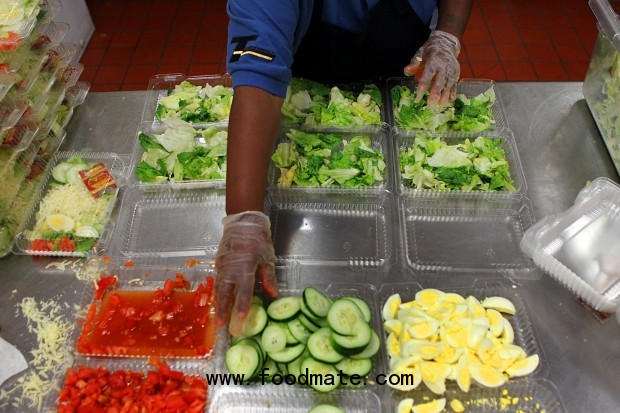
The fourth-grader in my field trip group had been looking forward to her lunch for more than an hour.
She described it to me on the bus, but I still wasn’t prepared for when I actually saw it.
It came out of a yellow cardboard box. The Kraft Oscar Mayer Lunchable had nacho chips, congealed processed cheese dip, salsa, a Capri Sun fruit punch and a mini candy bar. The list of “ingredients” took up nearly an entire side of the box.
It had 510 calories, about as many as a McDonald’s Big Mac (550), of which 220 were from fat. The lunch was heavy on carbohydrates, fat, sodium and sugar with few nutrients. Classic empty calorie food. This was going to fuel her learning for the day? But as I looked around I saw few children pulling out apples, carrot sticks or bananas from their sack lunches. There were bags of chips, pizza slices, varieties of Lunchables and cans of soda.
This was not a scene from an impoverished neighborhood with limited access to wholesome foods.
These were the lunches middle-class parents packed.
While the overall quality of school lunches has improved as the USDA revised standards earlier this year, how do we revise food standards in our own pantries? About 40 percent of the daily calories American children eat are empty ones, according to a 2011 report from the National Center of Health Statistics.
That’s more than twice as much as recommended.
It comes as no surprise that one out three children in this country is overweight or obese. But even those who appear to be a healthy weight may be deficient in vitamins and minerals if they never touch a green vegetable.
How did we get to a point where the food legacy we’re leaving our children will be one laced with diabetes, kidney and heart disease?
My jaw dropped when I saw that 40 percent statistic, but then I took a closer look inside our own pantry. We had our own shelf with a tempting siren call of salty, sugary and fattening snacks. And when we are tired, rushed or bored, this shelf takes precedence over all the fresh fruits and vegetables in the fridge.
Our bodies begin to crave a salt+sugar+fat combination for physiological reasons. And short-circuiting that wiring is stunningly simple, especially for children.
Parents tend to say that they send lunches their children will eat. Isn’t a processed Lunchable in the stomach better than a whole wheat sandwich and apple in the trash?
The truth is children eventually eat (and drink) what’s available to them. An article in the Journal of Pediatrics found that states that have strong protections regarding snack food in schools saw a direct correlation in lowering body mass index and childhood obesity.
As more states are realizing how powerful an impact they can have on this public health crisis, many are switching to more healthful snack options even ahead of the USDA’s upcoming revision on snack standards in schools, the first change in 30 years.
“The standards have changed for meals, but if they are selling unhealthy snacks right around the corner, it’s going to compete with school lunches,” Erik Olson, director of Food Programs at the Pew Charitable Trusts, explained.
Although a majority of our nation’s secondary schools do not sell fruits or vegetables as snacks and less healthful options are readily available, a significant change needs to happen in our homes, as well.
Changes in taste preferences and habits do not happen overnight, but gradual change is possible and has been proved in public schools that have taken the charge on this issue.
Research shows that consuming just 110 to 165 more calories than what’s recommended per day may be responsible for the rising rates of childhood obesity, according to Jessica Donze Black, the director of the project. That’s a stunning suggestion.
That’s the difference between choosing an apple over a bag of chips. Something so simple can yield incredible change in our children’s future health.
Let’s consider that the next time we pack a child’s lunch.





